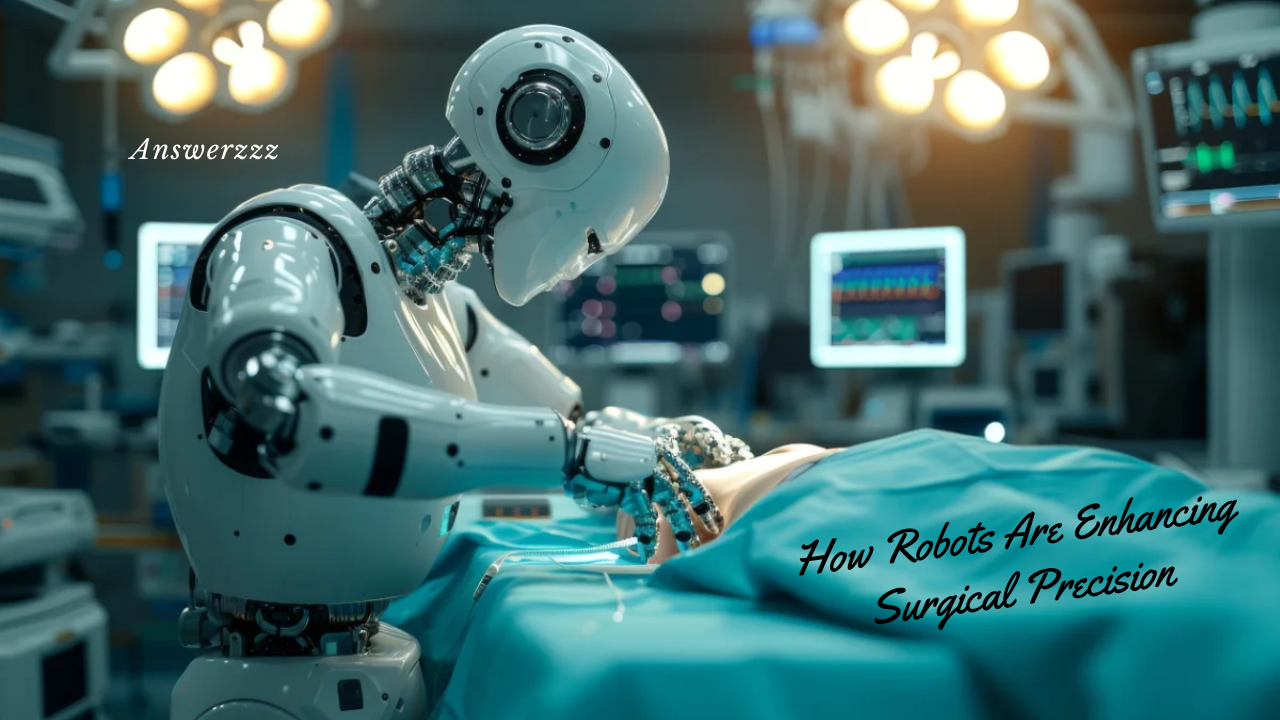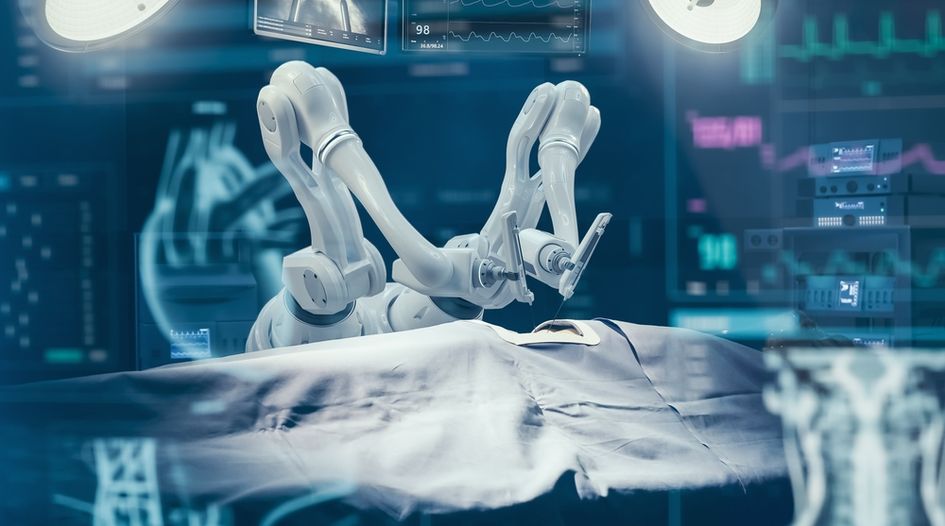In recent years, the field of surgery has witnessed a remarkable transformation due to the integration of robotics technology. Surgical robots are revolutionizing how surgeries are performed, providing enhanced precision, improved outcomes, and reduced recovery times for patients. This article delves into how robots are enhancing surgical precision, exploring their applications, benefits, and the future of robotic surgery.
The Evolution of Surgical Robotics
The concept of robotic surgery is not entirely new; it dates back to the late 20th century when the first robotic systems were introduced in the medical field. Early iterations focused primarily on basic tasks, but rapid advancements in technology have led to sophisticated systems capable of performing complex procedures. The introduction of the da Vinci Surgical System in 2000 marked a significant milestone, offering minimally invasive surgery with enhanced precision. Today, various robotic platforms are utilized across multiple surgical specialities, including urology, gynaecology, and orthopaedics.
How Robots Operate in Surgical Settings
Robotic surgical systems typically consist of a console, robotic arms, and advanced instruments. Surgeons control these robotic arms from a console, using high-definition 3D visualization to guide their movements with unparalleled precision. The robotic arms are equipped with articulated instruments that can mimic the delicate motions of the human hand, enabling surgeons to perform intricate tasks with increased dexterity and control. This level of precision minimizes tissue damage, leading to less bleeding and a lower risk of complications.
Advantages of Robotic Surgery
Enhanced Precision and Control
One of the most significant advantages of robotic surgery is the enhanced precision it offers. The robotic instruments can manoeuvre in tight spaces and perform intricate movements that may be challenging for a human hand. This precision allows surgeons to operate closer to critical structures, reducing the risk of damaging surrounding tissues. As a result, patients often experience fewer complications and better overall outcomes.
Reduced Recovery Times
Patients who undergo robotic-assisted surgery typically experience shorter recovery times compared to traditional open surgery. The minimally invasive nature of robotic procedures leads to smaller incisions, resulting in less pain and scarring. Studies have shown that patients can often return to their normal activities much sooner, reducing the overall burden on healthcare systems.
Improved Visualization
Robotic surgical systems come equipped with advanced imaging technology, providing surgeons with a high-definition, three-dimensional view of the surgical site. This enhanced visualization is crucial for complex procedures, as it allows surgeons to see details that may be difficult to detect with the naked eye. The improved clarity helps surgeons make more informed decisions during surgery, ultimately contributing to better patient outcomes.
Increased Surgical Range of Motion
Robotic instruments offer a greater range of motion than the human wrist, enabling surgeons to perform complex manoeuvres that would be impossible or challenging with traditional tools. This increased range of motion allows for more precise movements, particularly in tight spaces within the body. Surgeons can perform delicate tasks with confidence, knowing that the robotic system will respond to their inputs with precision.
Applications of Robotic Surgery
Robotic surgery is being utilized in various medical specialities, each benefiting from the unique capabilities of robotic systems.

Urology
In urology, robotic-assisted surgeries have become the gold standard for procedures such as prostatectomies and nephrectomies. The precision offered by robotic systems allows surgeons to remove cancerous tissue while preserving surrounding healthy tissue, significantly improving patient outcomes. Studies have shown that patients who undergo robotic-assisted prostate surgery experience less pain, shorter hospital stays, and faster recovery times compared to traditional approaches.
Gynaecology
Robotic surgery is also making waves in gynaecology, where it is employed for procedures such as hysterectomies and myomectomies. The minimally invasive approach not only reduces recovery times but also enhances cosmetic outcomes due to smaller incisions. Furthermore, robotic-assisted surgeries in gynaecology have demonstrated lower complication rates and faster recovery, making them an attractive option for patients.
Orthopedics
In orthopaedic surgery, robotic technology is increasingly being used for joint replacement procedures. Robotic-assisted systems enable surgeons to create highly accurate pre-operative plans, which can be executed with precision during surgery. This technology allows for better alignment and positioning of implants, leading to improved function and longevity of joint replacements. Patients benefit from reduced pain and faster rehabilitation following surgery.
Cardiothoracic Surgery
Robotic surgery is also being integrated into cardiothoracic procedures, such as mitral valve repair and coronary artery bypass surgery. The precision and control offered by robotic systems facilitate minimally invasive approaches, reducing trauma to the chest wall and leading to faster recovery times. As technology continues to advance, the potential applications of robotic surgery in cardiothoracic medicine are expanding.
Challenges and Considerations
While the benefits of robotic surgery are compelling, it is essential to acknowledge the challenges and considerations that come with this technology.
High Costs
Robotic surgical systems are expensive, both in terms of initial investment and ongoing maintenance. Healthcare facilities must weigh the costs against the potential benefits when deciding to implement robotic surgery programs. Additionally, the high cost of robotic-assisted procedures may not be covered by all insurance plans, leading to potential financial burdens for patients.
Learning Curve for Surgeons
Surgeons must undergo extensive training to become proficient in using robotic surgical systems. While many surgeons find the transition from traditional techniques to robotic-assisted surgery to be manageable, there is still a learning curve involved. Institutions must invest in comprehensive training programs to ensure that their surgical teams are well-prepared to utilize these advanced technologies effectively.
Limited Availability
Access to robotic surgery can vary by location. Many smaller hospitals may not have the resources to invest in robotic systems, which can limit patients’ options for minimally invasive procedures. As robotic technology continues to evolve and become more widely adopted, efforts are being made to increase access to these advanced surgical options.
The Future of Robotic Surgery
The future of robotic surgery is bright, with ongoing research and innovation paving the way for new applications and improved technologies. Here are some anticipated developments in the field:
Integration of Artificial Intelligence
As artificial intelligence (AI) continues to advance, its integration into robotic surgical systems could enhance surgical precision even further. AI algorithms could assist surgeons in real time, providing data-driven insights and suggestions during procedures. This technology may help reduce the likelihood of human error and improve patient outcomes.
Expanded Applications
Researchers are exploring the use of robotic systems in new surgical areas, including neurosurgery and plastic surgery. The potential to apply robotic technology to additional specialities could broaden the benefits of robotic surgery to a wider range of patients. As technology advances, we may see more complex procedures performed robotically, further enhancing surgical precision.
Remote Surgery
Telemedicine has gained prominence, and the future of robotic surgery may include remote procedures. Surgeons could operate robotic systems from distant locations, enabling patients in underserved areas to receive specialized care. While this technology is still in its infancy, the potential for remote robotic surgery is an exciting development that could reshape the landscape of healthcare delivery.
Improved Patient Outcomes
With ongoing advancements in robotic technology, the focus remains on improving patient outcomes. As surgeons become more skilled in using robotic systems and technology continues to evolve, patients can expect even better results from robotic-assisted surgeries. Enhanced precision, reduced complications, and faster recovery times will contribute to a more favourable surgical experience.

Robotic surgery is undeniably transforming the landscape of surgical procedures. By enhancing precision, improving visualization, and minimizing invasiveness, robotic systems are providing surgeons with the tools they need to deliver exceptional patient care. While challenges such as costs and access remain, the future of robotic surgery holds immense promise. As technology continues to advance, patients can look forward to even more precise and effective surgical options, ultimately leading to better outcomes and improved quality of life. The integration of robots in surgical settings is not just a technological marvel; it is a paradigm shift that is reshaping the way we approach surgery and patient care.




